Localized Surface Plasmon Resonances of AgAl Alloy Nanoparticles Self-Organized by Annealing of Ag/Al Bilayer Films
Abstract
:1. Introduction
2. Materials and Methods
2.1. Experimental Details
2.2. Theoretical Model
3. Results and Discussion
3.1. Experimental Results
3.2. Theoretical Results
4. Conclusions
Author Contributions
Funding
Institutional Review Board Statement
Informed Consent Statement
Data Availability Statement
Acknowledgments
Conflicts of Interest
References
- Hutter, E.; Fendler, J.H. Exploitation of Localized Surface Plasmon Resonance. Adv. Mater. 2004, 16, 1685–1706. [Google Scholar] [CrossRef]
- Mayer, K.M.; Hafner, J.H. Localized Surface Plasmon Resonance Sensors. Chem. Rev. 2011, 111, 3828–3857. [Google Scholar] [CrossRef] [PubMed]
- Kim, D.M.; Park, J.S.; Jung, S.-W.; Yeom, J.; Yoo, S.M. Biosensing Applications Using Nanostructure-Based Localized Surface Plasmon Resonance Sensors. Sensors 2021, 21, 3191. [Google Scholar] [CrossRef] [PubMed]
- Takimoto, Y.; Monkawa, A.; Nagata, K.; Gessei, T.; Kobayashi, M.; Kinoshita, M.; Mori, T.; Kagi, H. Localized Surface Plasmon Resonance Sensing of SO2 and H2S Using Zeolitic Imidazolate Framework-8. Sens. Actuators B Chem. 2023, 383, 133585. [Google Scholar] [CrossRef]
- Li, W.; Ren, K.; Zhou, J. Aluminum-Based Localized Surface Plasmon Resonance for Biosensing. TrAC Trends Anal. Chem. 2016, 80, 486–494. [Google Scholar] [CrossRef]
- Boruah, B.S.; Ojah, N.; Biswas, R. Bio-Inspired Localized Surface Plasmon Resonance Enhanced Sensing of Mercury Through Green Synthesized Silver Nanoparticle. J. Light. Technol. 2020, 38, 2086–2091. [Google Scholar] [CrossRef]
- Li, S.; Miao, P.; Zhang, Y.; Wu, J.; Zhang, B.; Du, Y.; Han, X.; Sun, J.; Xu, P. Recent Advances in Plasmonic Nanostructures for Enhanced Photocatalysis and Electrocatalysis. Adv. Mater. 2021, 33, 2000086. [Google Scholar] [CrossRef] [PubMed]
- Lemos De Souza, M.; Pereira Dos Santos, D.; Corio, P. Localized Surface Plasmon Resonance Enhanced Photocatalysis: An Experimental and Theoretical Mechanistic Investigation. RSC Adv. 2018, 8, 28753–28762. [Google Scholar] [CrossRef]
- Zhao, J.; Xue, S.; Ji, R.; Li, B.; Li, J. Localized Surface Plasmon Resonance for Enhanced Electrocatalysis. Chem. Soc. Rev. 2021, 50, 12070–12097. [Google Scholar] [CrossRef]
- Liang, Z.; Sun, J.; Jiang, Y.; Jiang, L.; Chen, X. Plasmonic Enhanced Optoelectronic Devices. Plasmonics 2014, 9, 859–866. [Google Scholar] [CrossRef]
- Kunwar, S.; Pandit, S.; Jeong, J.-H.; Lee, J. Improved Photoresponse of UV Photodetectors by the Incorporation of Plasmonic Nanoparticles on GaN Through the Resonant Coupling of Localized Surface Plasmon Resonance. Nano-Micro Lett. 2020, 12, 91. [Google Scholar] [CrossRef] [PubMed]
- Lee, J.W.; Ha, G.; Park, J.; Song, H.G.; Park, J.Y.; Lee, J.; Cho, Y.-H.; Lee, J.-L.; Kim, J.K.; Kim, J.K. AlGaN Deep-Ultraviolet Light-Emitting Diodes with Localized Surface Plasmon Resonance by a High-Density Array of 40 Nm Al Nanoparticles. ACS Appl. Mater. Interfaces 2020, 12, 36339–36346. [Google Scholar] [CrossRef] [PubMed]
- Atwater, H.A.; Polman, A. Plasmonics for Improved Photovoltaic Devices. Nat. Mater. 2010, 9, 205–213. [Google Scholar] [CrossRef] [PubMed]
- Fei Guo, C.; Sun, T.; Cao, F.; Liu, Q.; Ren, Z. Metallic Nanostructures for Light Trapping in Energy-Harvesting Devices. Light. Sci. Appl. 2014, 3, e161. [Google Scholar] [CrossRef]
- Huang, C.-L.; Kumar, G.; Sharma, G.D.; Chen, F.-C. Plasmonic Effects of Copper Nanoparticles in Polymer Photovoltaic Devices for Outdoor and Indoor Applications. Appl. Phys. Lett. 2020, 116, 253302. [Google Scholar] [CrossRef]
- Kim, M.; Lee, J.; Nam, J. Plasmonic Photothermal Nanoparticles for Biomedical Applications. Adv. Sci. 2019, 6, 1900471. [Google Scholar] [CrossRef] [PubMed]
- Sharifi, M.; Attar, F.; Saboury, A.A.; Akhtari, K.; Hooshmand, N.; Hasan, A.; El-Sayed, M.A.; Falahati, M. Plasmonic Gold Nanoparticles: Optical Manipulation, Imaging, Drug Delivery and Therapy. J. Control. Release 2019, 311–312, 170–189. [Google Scholar] [CrossRef] [PubMed]
- Li, Z.-H.; Chen, Y.; Sun, Y.; Zhang, X.-Z. Platinum-Doped Prussian Blue Nanozymes for Multiwavelength Bioimaging Guided Photothermal Therapy of Tumor and Anti-Inflammation. ACS Nano 2021, 15, 5189–5200. [Google Scholar] [CrossRef] [PubMed]
- Zhou, L.; Tan, Y.; Wang, J.; Xu, W.; Yuan, Y.; Cai, W.; Zhu, S.; Zhu, J. 3D Self-Assembly of Aluminium Nanoparticles for Plasmon-Enhanced Solar Desalination. Nat. Photon 2016, 10, 393–398. [Google Scholar] [CrossRef]
- Tan, S.J.; Zhang, L.; Zhu, D.; Goh, X.M.; Wang, Y.M.; Kumar, K.; Qiu, C.-W.; Yang, J.K.W. Plasmonic Color Palettes for Photorealistic Printing with Aluminum Nanostructures. Nano Lett. 2014, 14, 4023–4029. [Google Scholar] [CrossRef]
- Ta, N.; Huang, J.-Y.; He, S.; Hanggai, W.; Chao, L.-M. Applications of Optical Control Materials Based on Localized Surface Plasmon Resonance Effect in Smart Windows. Tungsten 2024, 1–21. [Google Scholar] [CrossRef]
- Nguyen, N.P.U.; Dang, N.T.; Doan, L.; Nguyen, T.T.H. Synthesis of Silver Nanoparticles: From Conventional to ‘Modern’ Methods—A Review. Processes 2023, 11, 2617. [Google Scholar] [CrossRef]
- Huang, C.-L.; Ji Huang, H.; Chen, S.-H.; Huang, Y.-S.; Kao, P.-C.; Chou Chau, Y.-F.; Chiang, H.-P. Localized Surface Plasmon Resonance Enhanced by the Light-Scattering Property of Silver Nanoparticles for Improved Luminescence of Polymer Light-Emitting Diodes. J. Ind. Eng. Chem. 2021, 103, 283–291. [Google Scholar] [CrossRef]
- Chen, S.-H.; Yu, C.-F.; Wang, C.-J.; Chen, S.-H.; Chen, Y.-D.; Chen, T.-C.; Lin, C.-F. Light Enhancement of Plasmonic Nano-Structure for PLEDs at RGB Wavelengths. Org. Electron. 2016, 38, 337–343. [Google Scholar] [CrossRef]
- West, P.R.; Ishii, S.; Naik, G.V.; Emani, N.K.; Shalaev, V.M.; Boltasseva, A. Searching for Better Plasmonic Materials. Laser Photon. Rev. 2010, 4, 795–808. [Google Scholar] [CrossRef]
- Naik, G.V.; Shalaev, V.M.; Boltasseva, A. Alternative Plasmonic Materials: Beyond Gold and Silver. Adv. Mater. 2013, 25, 3264–3294. [Google Scholar] [CrossRef]
- Parashar, P.K.; Komarala, V.K. Engineered Optical Properties of Silver-Aluminum Alloy Nanoparticles Embedded in SiON Matrix for Maximizing Light Confinement in Plasmonic Silicon Solar Cells. Sci. Rep. 2017, 7, 12520. [Google Scholar] [CrossRef] [PubMed]
- Hopper, E.R.; Boukouvala, C.; Asselin, J.; Biggins, J.S.; Ringe, E. Opportunities and Challenges for Alternative Nanoplasmonic Metals: Magnesium and Beyond. J. Phys. Chem. C 2022, 126, 10630–10643. [Google Scholar] [CrossRef] [PubMed]
- Zhu, X.; Imran Hossain, G.M.; George, M.; Farhang, A.; Cicek, A.; Yanik, A.A. Beyond Noble Metals: High Q-Factor Aluminum Nanoplasmonics. ACS Photonics 2020, 7, 416–424. [Google Scholar] [CrossRef]
- Shrestha, V.R.; Lee, S.-S.; Kim, E.-S.; Choi, D.-Y. Aluminum Plasmonics Based Highly Transmissive Polarization-Independent Subtractive Color Filters Exploiting a Nanopatch Array. Nano Lett. 2014, 14, 6672–6678. [Google Scholar] [CrossRef]
- Sobhani, A.; Manjavacas, A.; Cao, Y.; McClain, M.J.; García De Abajo, F.J.; Nordlander, P.; Halas, N.J. Pronounced Linewidth Narrowing of an Aluminum Nanoparticle Plasmon Resonance by Interaction with an Aluminum Metallic Film. Nano Lett. 2015, 15, 6946–6951. [Google Scholar] [CrossRef]
- Knight, M.W.; Liu, L.; Wang, Y.; Brown, L.; Mukherjee, S.; King, N.S.; Everitt, H.O.; Nordlander, P.; Halas, N.J. Aluminum Plasmonic Nanoantennas. Nano Lett. 2012, 12, 6000–6004. [Google Scholar] [CrossRef] [PubMed]
- Knight, M.W.; King, N.S.; Liu, L.; Everitt, H.O.; Nordlander, P.; Halas, N.J. Aluminum for Plasmonics. ACS Nano 2014, 8, 834–840. [Google Scholar] [CrossRef] [PubMed]
- Lecarme, O.; Sun, Q.; Ueno, K.; Misawa, H. Robust and Versatile Light Absorption at Near-Infrared Wavelengths by Plasmonic Aluminum Nanorods. ACS Photonics 2014, 1, 538–546. [Google Scholar] [CrossRef]
- Lee, M.; Kim, J.U.; Lee, K.J.; Ahn, S.; Shin, Y.-B.; Shin, J.; Park, C.B. Aluminum Nanoarrays for Plasmon-Enhanced Light Harvesting. ACS Nano 2015, 9, 6206–6213. [Google Scholar] [CrossRef] [PubMed]
- Shimanoe, K.; Endo, S.; Matsuyama, T.; Wada, K.; Okamoto, K. Localized Surface Plasmon Resonance in Deep Ultraviolet Region below 200 Nm Using a Nanohemisphere on Mirror Structure. Sci. Rep. 2021, 11, 5169. [Google Scholar] [CrossRef] [PubMed]
- Maidecchi, G.; Gonella, G.; Proietti Zaccaria, R.; Moroni, R.; Anghinolfi, L.; Giglia, A.; Nannarone, S.; Mattera, L.; Dai, H.-L.; Canepa, M.; et al. Deep Ultraviolet Plasmon Resonance in Aluminum Nanoparticle Arrays. ACS Nano 2013, 7, 5834–5841. [Google Scholar] [CrossRef] [PubMed]
- Olson, J.; Manjavacas, A.; Liu, L.; Chang, W.-S.; Foerster, B.; King, N.S.; Knight, M.W.; Nordlander, P.; Halas, N.J.; Link, S. Vivid, Full-Color Aluminum Plasmonic Pixels. Proc. Natl. Acad. Sci. USA 2014, 111, 14348–14353. [Google Scholar] [CrossRef] [PubMed]
- Gérard, D.; Gray, S.K. Aluminium Plasmonics. J. Phys. D Appl. Phys. 2015, 48, 184001. [Google Scholar] [CrossRef]
- Raja, S.S.; Cheng, C.-W.; Gwo, S. Low-Loss Aluminum Epitaxial Film for Scalable and Sustainable Plasmonics: Direct Comparison with Silver Epitaxial Film. Nanoscale 2020, 12, 23809–23816. [Google Scholar] [CrossRef]
- Chowdhury, M.H.; Ray, K.; Gray, S.K.; Pond, J.; Lakowicz, J.R. Aluminum Nanoparticles as Substrates for Metal-Enhanced Fluorescence in the Ultraviolet for the Label-Free Detection of Biomolecules. Anal. Chem. 2009, 81, 1397–1403. [Google Scholar] [CrossRef] [PubMed]
- Chang, Y.-L.; Su, C.-J.; Lu, L.-C.; Wan, D. Aluminum Plasmonic Nanoclusters for Paper-Based Surface-Enhanced Raman Spectroscopy. Anal. Chem. 2022, 94, 16319–16327. [Google Scholar] [CrossRef] [PubMed]
- Rebello Sousa Dias, M.; Leite, M.S. Alloying: A Platform for Metallic Materials with On-Demand Optical Response. Acc. Chem. Res. 2019, 52, 2881–2891. [Google Scholar] [CrossRef] [PubMed]
- Coviello, V.; Forrer, D.; Amendola, V. Recent Developments in Plasmonic Alloy Nanoparticles: Synthesis, Modelling, Properties and Applications. ChemPhysChem 2022, 23, e202200136. [Google Scholar] [CrossRef] [PubMed]
- Lee, D.-J.; Yim, H.-D.; Kim, Y.-G.; Jeong, Y.-B.; Kim, T.Y.; Hwangbo, C.K.; Jun, Y.C.; Park, S.-G.; Lee, S.-G.; Beom-Hoan, O. Resonant Wavelength Tuning of Localized Plasmons in Silver-Aluminum Nanoparticles. J. Korean Phys. Soc. 2013, 63, 2098–2101. [Google Scholar] [CrossRef]
- Sun, W.; Hong, R.; Liu, Q.; Li, Z.; Shi, J.; Tao, C.; Zhang, D. SERS-Active Ag–Al Alloy Nanoparticles with Tunable Surface Plasmon Resonance Induced by Laser Ablation. Opt. Mater. 2019, 96, 109298. [Google Scholar] [CrossRef]
- Hong, R.; Sun, W.; Liu, Q.; Li, Z.; Tao, C.; Zhang, D.; Zhang, D. Al-Induced Tunable Surface Plasmon Resonance of Ag Thin Film by Laser Irradiation. Appl. Phys. Express 2019, 12, 085503. [Google Scholar] [CrossRef]
- Ntemogiannis, D.; Tsarmpopoulou, M.; Stamatelatos, A.; Grammatikopoulos, S.; Karoutsos, V.; Anyfantis, D.I.; Barnasas, A.; Alexopoulos, V.; Giantzelidis, K.; Ndoj, E.A.; et al. ZnO Matrices as a Platform for Tunable Localized Surface Plasmon Resonances of Silver Nanoparticles. Coatings 2024, 14, 69. [Google Scholar] [CrossRef]
- Ntemogiannis, D.; Tsarmpopoulou, M.; Moularas, C.; Deligiannakis, Y.; Stamatelatos, A.; Maratos, D.M.; Ploumis, N.G.; Karoutsos, V.; Grammatikopoulos, S.; Sigalas, M.; et al. Temperature-Dependent Localized Surface Plasmon Resonances of Noble Nanoparticles Covered with Polymers. Photonics 2024, 11, 618. [Google Scholar] [CrossRef]
- Tsarmpopoulou, M.; Ntemogiannis, D.; Stamatelatos, A.; Geralis, D.; Karoutsos, V.; Sigalas, M.; Poulopoulos, P.; Grammatikopoulos, S. Silver Nanoparticles’ Localized Surface Plasmon Resonances Emerged at Polymeric Environments by Theory and Experiment. Micro 2024, 4, 318–333. [Google Scholar] [CrossRef]
- Stamatelatos, A.; Tsarmpopoulou, M.; Chronis, A.G.; Kanistras, N.; Anyfantis, D.I.; Violatzi, E.; Geralis, D.; Sigalas, M.M.; Poulopoulos, P.; Grammatikopoulos, S. Optical Interpretation for Plasmonic Adjustment of Nanostructured Ag-NiO Thin Films. Int. J. Mod. Phys. B 2021, 35, 2150093. [Google Scholar] [CrossRef]
- Ntemogiannis, D.; Tsarmpopoulou, M.; Chronis, A.G.; Anyfantis, D.I.; Barnasas, A.; Grammatikopoulos, S.; Sigalas, M.; Poulopoulos, P. On the Localized Surface Plasmonic Resonances of AgPd Alloy Nanoparticles by Experiment and Theory. Coatings 2021, 11, 893. [Google Scholar] [CrossRef]
- Chronis, A.G.; Stamatelatos, A.; Grammatikopoulos, S.; Sigalas, M.M.; Karoutsos, V.; Maratos, D.M.; Lysandrou, S.P.; Trachylis, D.; Politis, C.; Poulopoulos, P. Microstructure and Plasmonic Behavior of Self-Assembled Silver Nanoparticles and Nanorings. J. Appl. Phys. 2019, 125, 023106. [Google Scholar] [CrossRef]
- Aswal, D.K.; Muthe, K.P.; Joshi, N.; Debnath, A.K.; Gupta, S.K.; Yakhmi, J.V. In Situ X-ray Photoelectron Spectroscopy of Ag/Al Bilayers Grown by Molecular Beam Epitaxy. J. Cryst. Growth 2003, 256, 201–205. [Google Scholar] [CrossRef]
- Debnath, A.K.; Joshi, N.; Muthe, K.P.; Vyas, J.C.; Aswal, D.K.; Gupta, S.K.; Yakhmi, J.V. Surface and Electrical-Transport Studies of Ag/Al Bilayer-Structures Grown by Molecular Beam Epitaxy. Appl. Surf. Sci. 2005, 243, 220–227. [Google Scholar] [CrossRef]
- Malgas, G.F.; Adams, D.; Alford, T.L.; Mayer, J.W. A Study of the Factors Influencing the Kinetics in Ag/Al Bilayer Systems. Thin Solid Film. 2004, 467, 267–274. [Google Scholar] [CrossRef]
- Malgas, G.F.; Adams, D.; Nguyen, P.; Wang, Y.; Alford, T.L.; Mayer, J.W. Investigation of the Effects of Different Annealing Ambients on Ag/Al Bilayers: Electrical Properties and Morphology. J. Appl. Phys. 2001, 90, 5591–5598. [Google Scholar] [CrossRef]


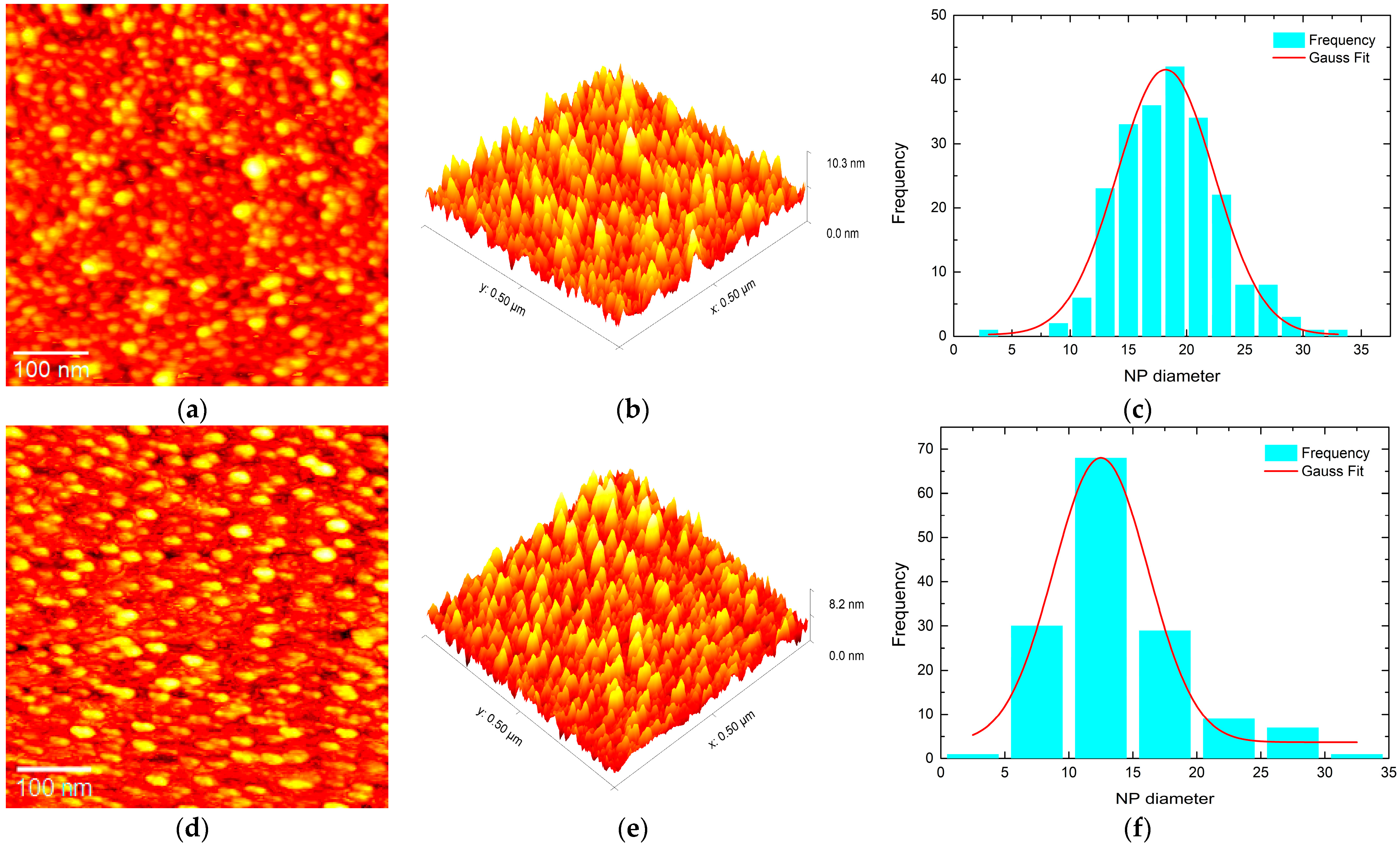
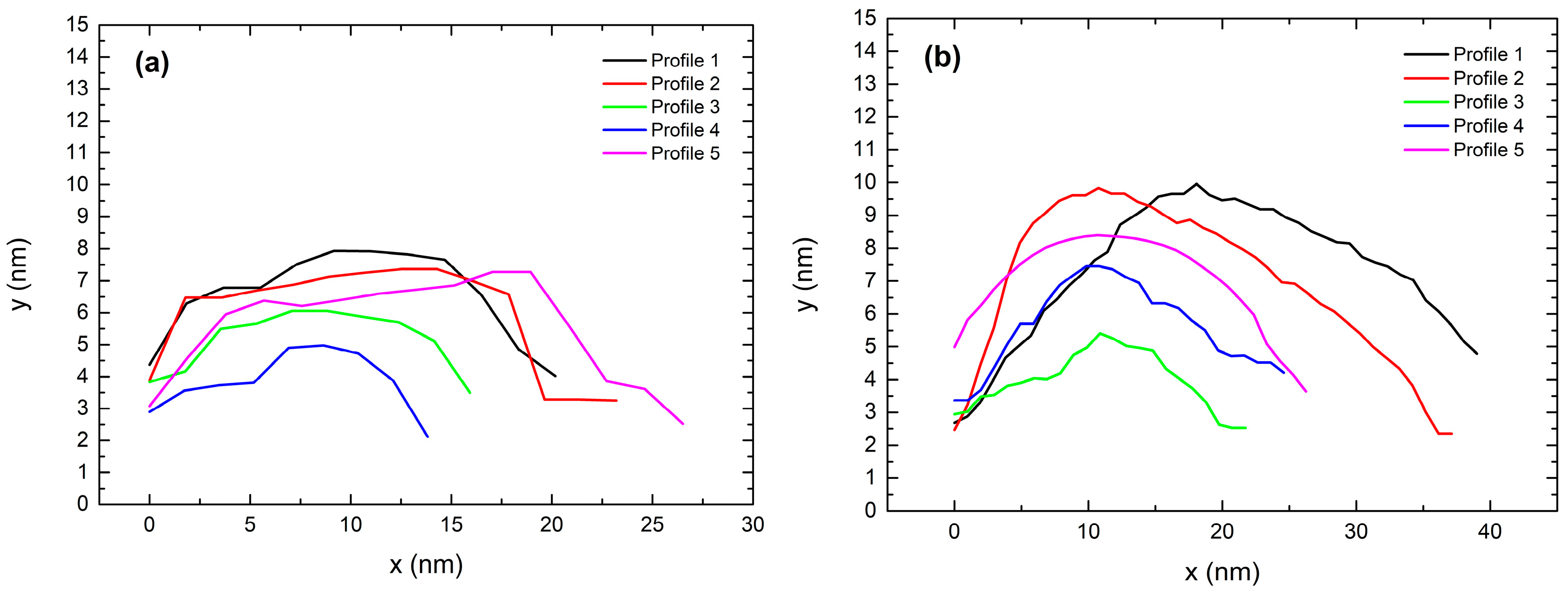
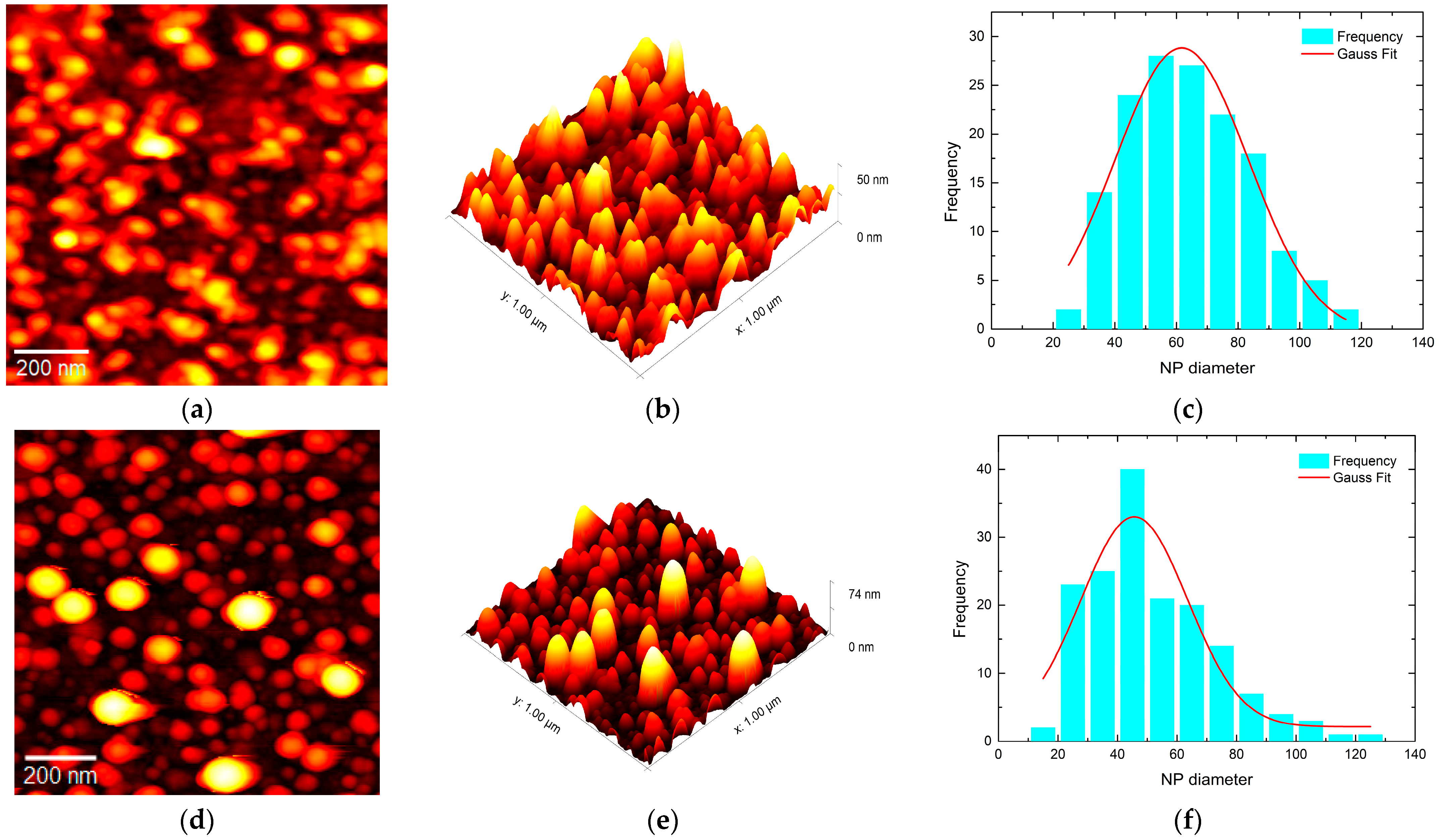
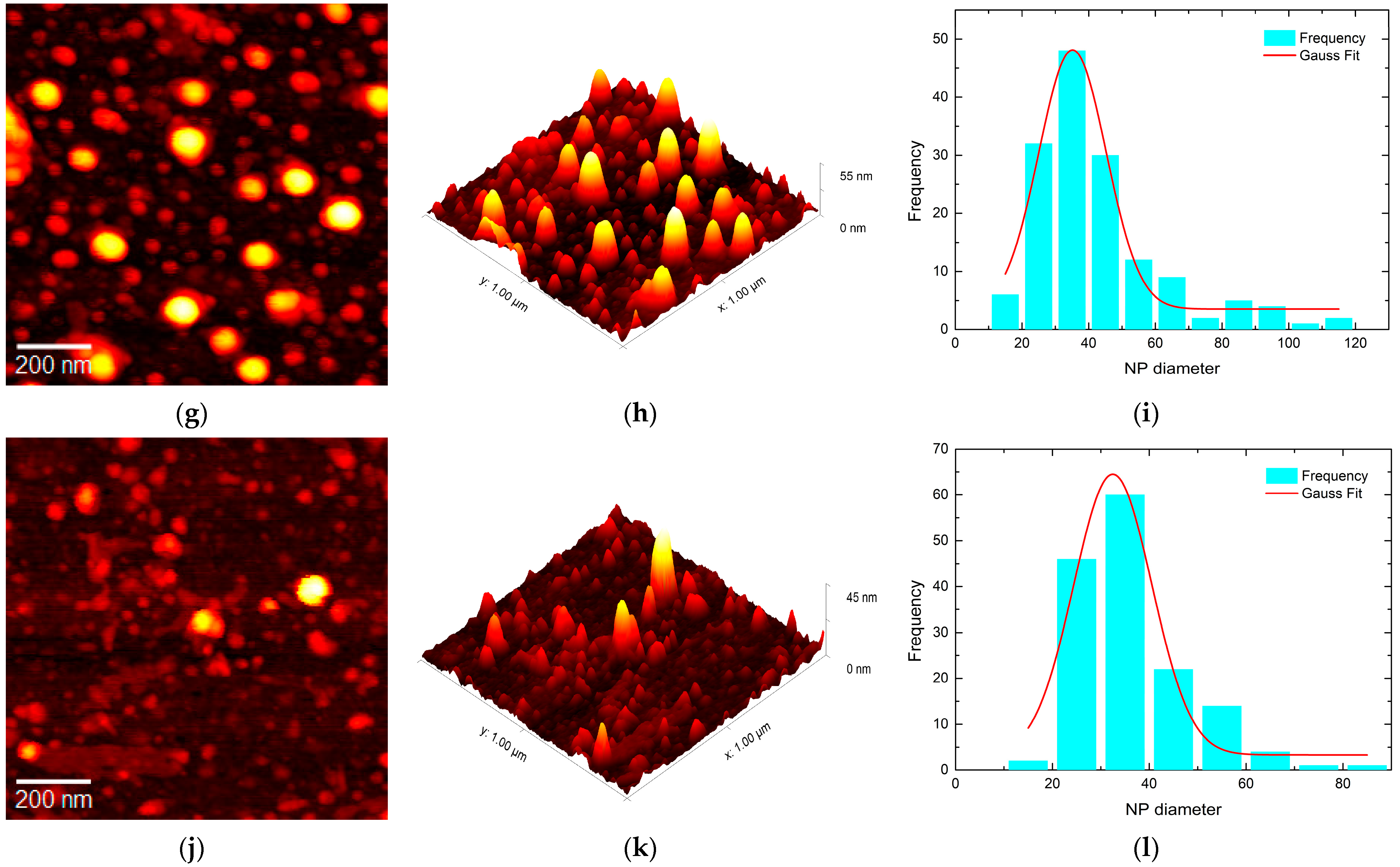


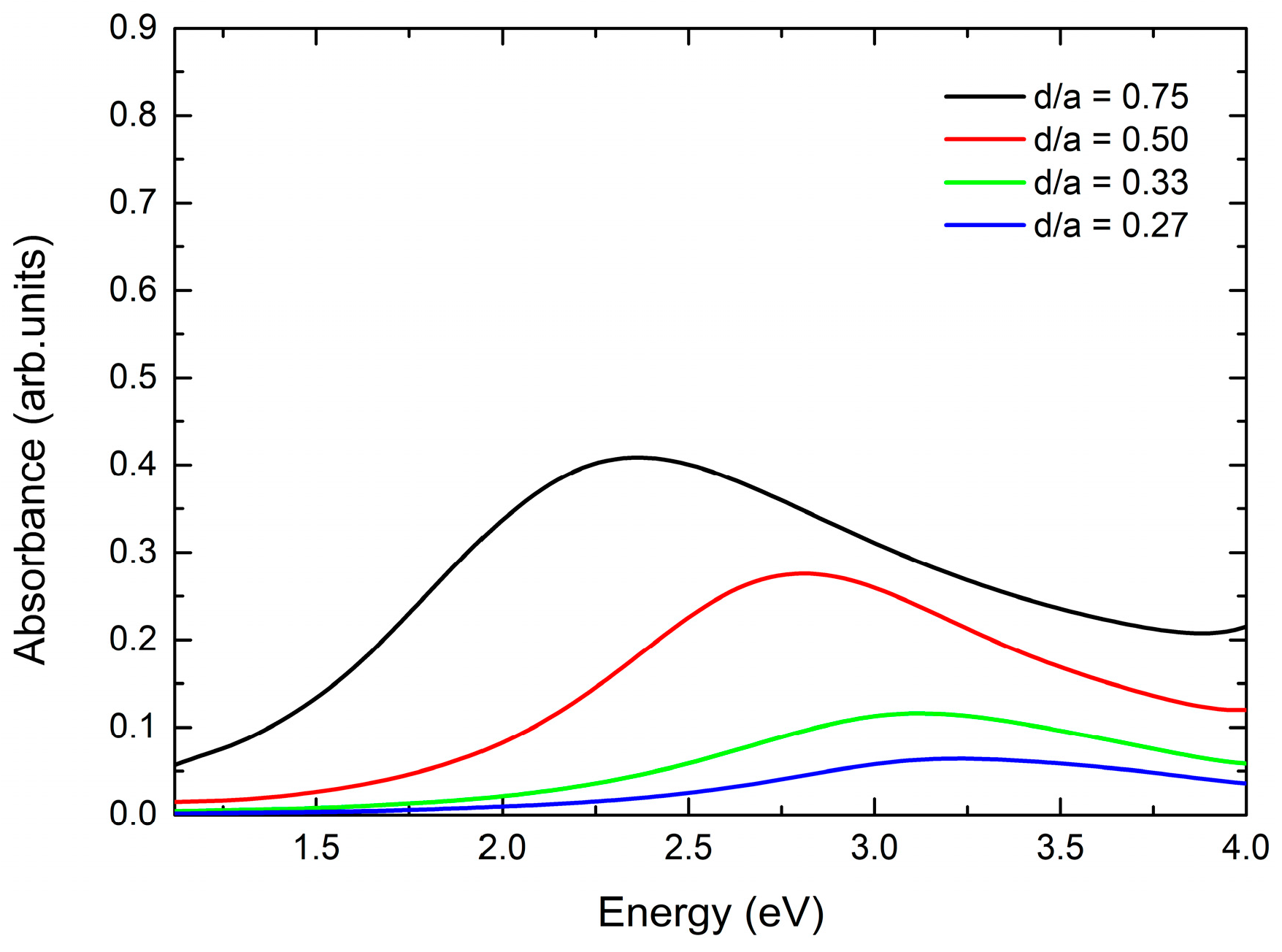
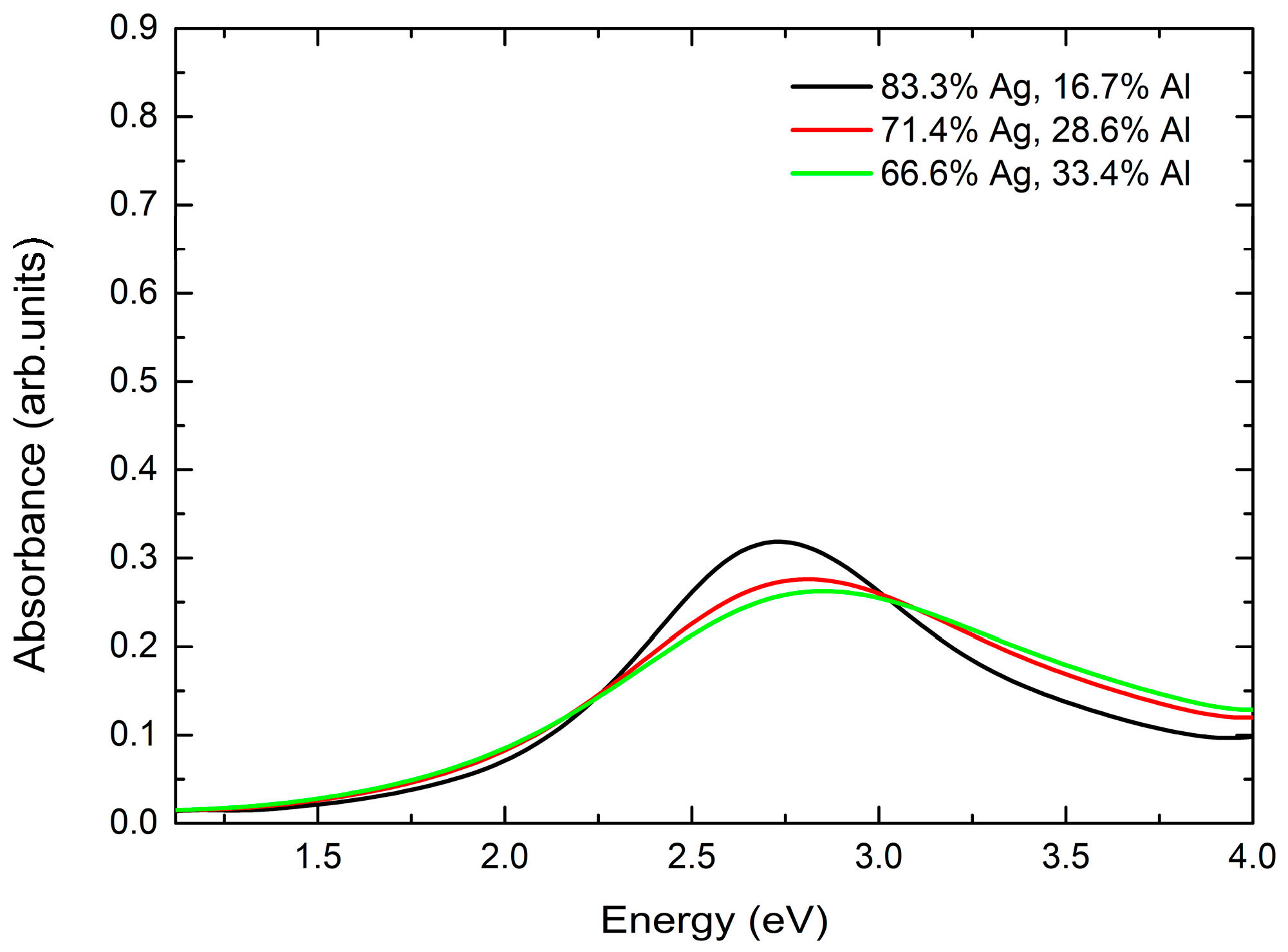
| Specimen | Bilayer Total Thickness (nm) | Individual Layer Thickness (nm) | Nominal Composition (at. %) | Annealing Time at 440 °C | ||
|---|---|---|---|---|---|---|
| Ag | Al | Ag | Al | |||
| Ag/Al #1 | 18 | 12 | 6 | 66.7 | 33.3 | 120 min |
| Ag/Al #2 | 12 | 10 | 2 | 83.3 | 16.7 | 20 min |
| Ag/Al #3 | 8.4 | 7 | 1.4 | 83.3 | 16.7 | 10 min |
| Ag/Al #4 | 7 | 5 | 2 | 71.4 | 28.6 | 5 min |
Disclaimer/Publisher’s Note: The statements, opinions and data contained in all publications are solely those of the individual author(s) and contributor(s) and not of MDPI and/or the editor(s). MDPI and/or the editor(s) disclaim responsibility for any injury to people or property resulting from any ideas, methods, instructions or products referred to in the content. |
© 2024 by the authors. Licensee MDPI, Basel, Switzerland. This article is an open access article distributed under the terms and conditions of the Creative Commons Attribution (CC BY) license (https://creativecommons.org/licenses/by/4.0/).
Share and Cite
Ntemogiannis, D.; Diamantopoulos, N.C.; Papaggeli, M.; Grammatikopoulos, S.; Sigalas, M.; Poulopoulos, P. Localized Surface Plasmon Resonances of AgAl Alloy Nanoparticles Self-Organized by Annealing of Ag/Al Bilayer Films. Photonics 2024, 11, 713. https://doi.org/10.3390/photonics11080713
Ntemogiannis D, Diamantopoulos NC, Papaggeli M, Grammatikopoulos S, Sigalas M, Poulopoulos P. Localized Surface Plasmon Resonances of AgAl Alloy Nanoparticles Self-Organized by Annealing of Ag/Al Bilayer Films. Photonics. 2024; 11(8):713. https://doi.org/10.3390/photonics11080713
Chicago/Turabian StyleNtemogiannis, Dimitrios, Nikolaos C. Diamantopoulos, Maria Papaggeli, Spyridon Grammatikopoulos, Mihail Sigalas, and Panagiotis Poulopoulos. 2024. "Localized Surface Plasmon Resonances of AgAl Alloy Nanoparticles Self-Organized by Annealing of Ag/Al Bilayer Films" Photonics 11, no. 8: 713. https://doi.org/10.3390/photonics11080713






